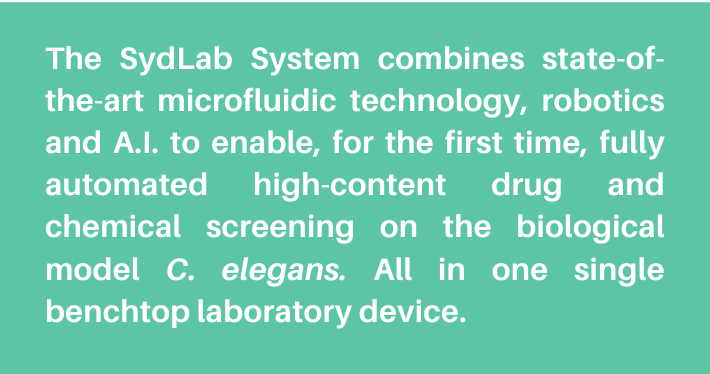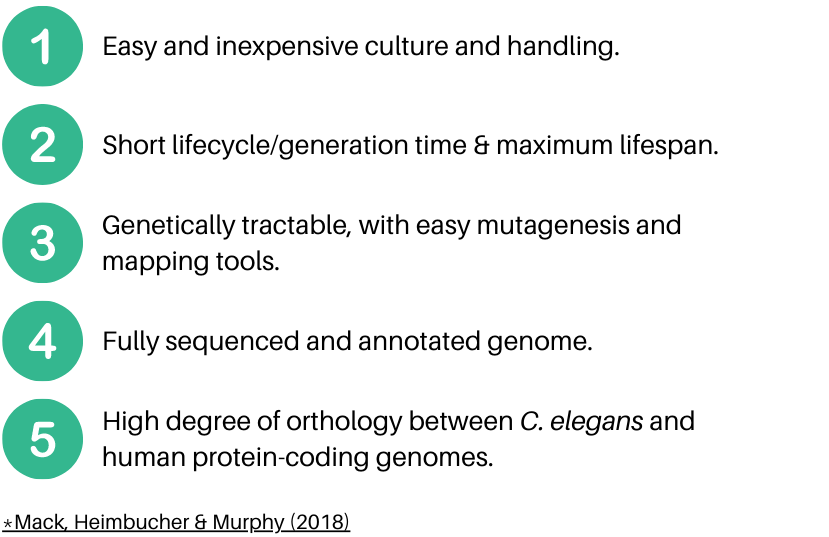
How the nematode C. elegans has been key in aging research crucial discoveries
A short-lived nematode, with which we share two-thirds of homologous genes, has been the key of multiple discoveries in aging and longevity studies. Meet the Caenorhabditis elegans, the worm that has been conquering the field of aging research during the last decades.
C. elegans – The golden star of aging research discoveries
The biological model Caenorhabditis elegans has been fundamental in aging and longevity research allowing groundbreaking findings about human lifespan. The Insulin/Insulin-like Growth Factor (IGF-1) signaling pathway, the very first life-extension pathway ever defined, was discovered in C. elegans. It has been later confirmed as a key regulator of lifespan and aging processes across the animal kingdom, including mammals. One of the major breakthroughs has been the discovery of the daf-2 gene, which encodes the homolog of the mammalian insulin receptor (INSR). Almost thirty years after said discovery, C. elegans continues to be one of the most popular biological models for the study of pathways regulating aging and longevity.
But C. elegans worms didn’t stop there. They also contributed to Alzheimer’s disease research, being crucial in the identification of presenilin, a protein involved in the onset of said neurodegenerative disease. Other discoveries made in the longevity research field using this biological model are the identification of essential proteins for early embryonic development, such as RNA-binding proteins, also decisive during germline formation.
Advantages of C. elegans in Aging Research
The preference for C. elegans as a biological model in aging research is not a coincidence. Its favorable biological characteristics together with new technologies facilitating and speeding-up the research process constitute the key advantages of C. elegans for lifespan and longevity studies.
C. elegans have a short lifespan of about 3 weeks (vs 3 years in mice). Besides a high genetic homology with mammals, C. elegans display multiple quantifiable age-associated characteristics. Additionally, they are cheap to maintain in the laboratory settings due to their small size, simplicity of maintenance, and high fertility rate. Moreover, their transparent body allows easy and fast anatomical observations.
All in all, these characteristics make C. elegans a substantially cost-effective biological model for anti-aging drug screening and longevity research, facilitating high throughput screening experiments without ethical concerns, as it is considered to be part of the New Approach Methodologies (NAMs) toolkit.
The SydLab System – An innovative and fully-automated laboratory device ideal for Aging Studies in C. elegans
At Nagi Bioscience we strive for moving towards the future of biological testing. Having completed multiple successful service projects using our innovative Organism-on-Chip technology, today we present our first market product: the revolutionary SydLab System.

C. elegans being a widely recognized model for aging research, many aspects of the longevity studies are still based on manual work. Hence, the need for automation of the experimentation arises, as it would solve the R&D pipeline drawbacks, speed-up the research process, while decreasing resources involved.
Nagi Bioscience presents to you the solution: Meet the Aging-on-Chip technology
Nagi’s SydLab System allows full automation of the entire process of culture, treatment, imaging and analysis of C. elegans at unprecedented levels of throughput and standardization.
What does the SydLab System offer?
Do you want to know more?
Interested in how Nagi’s technology works for Aging research? Check here for further information about the diverse applications of our SydLab System.

Next stop: Longevity Leaders World Congress 2022
Keen to know more about Nagi’s Aging-on-Chip technology? You can talk with us this week at The Longevity Leaders World Congress 2022.
Discover the advantages of C. elegans as a widely recognized biological model and how Nagi’s technology can facilitate the development of your research.




